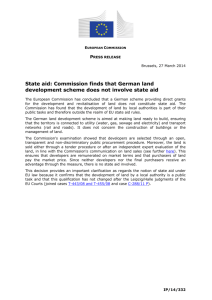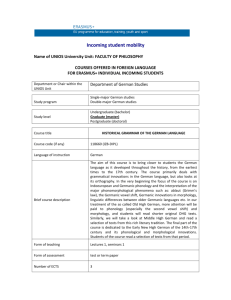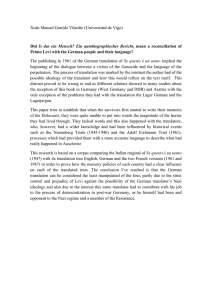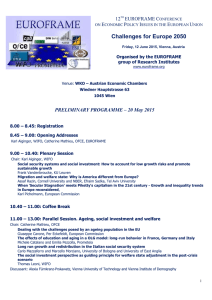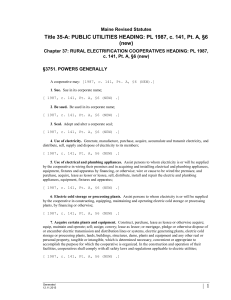Extended abstract of a paper designated to be presented at the XII
advertisement
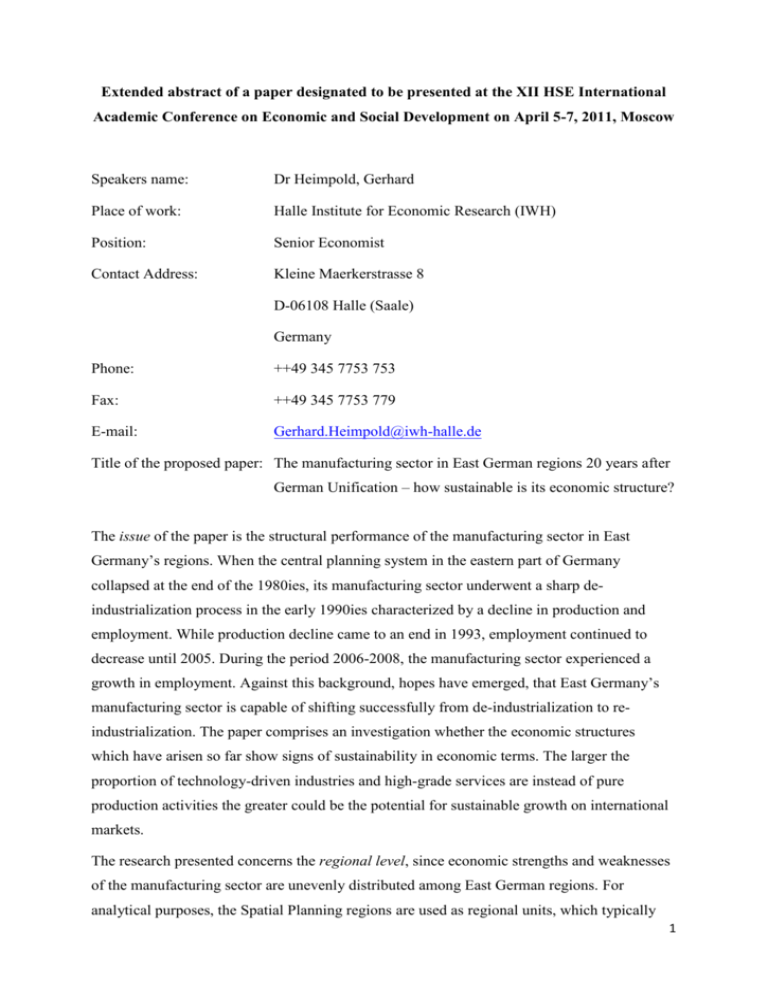
Extended abstract of a paper designated to be presented at the XII HSE International Academic Conference on Economic and Social Development on April 5-7, 2011, Moscow Speakers name: Dr Heimpold, Gerhard Place of work: Halle Institute for Economic Research (IWH) Position: Senior Economist Contact Address: Kleine Maerkerstrasse 8 D-06108 Halle (Saale) Germany Phone: ++49 345 7753 753 Fax: ++49 345 7753 779 E-mail: Gerhard.Heimpold@iwh-halle.de Title of the proposed paper: The manufacturing sector in East German regions 20 years after German Unification – how sustainable is its economic structure? The issue of the paper is the structural performance of the manufacturing sector in East Germany’s regions. When the central planning system in the eastern part of Germany collapsed at the end of the 1980ies, its manufacturing sector underwent a sharp deindustrialization process in the early 1990ies characterized by a decline in production and employment. While production decline came to an end in 1993, employment continued to decrease until 2005. During the period 2006-2008, the manufacturing sector experienced a growth in employment. Against this background, hopes have emerged, that East Germany’s manufacturing sector is capable of shifting successfully from de-industrialization to reindustrialization. The paper comprises an investigation whether the economic structures which have arisen so far show signs of sustainability in economic terms. The larger the proportion of technology-driven industries and high-grade services are instead of pure production activities the greater could be the potential for sustainable growth on international markets. The research presented concerns the regional level, since economic strengths and weaknesses of the manufacturing sector are unevenly distributed among East German regions. For analytical purposes, the Spatial Planning regions are used as regional units, which typically 1 comprise two or more administrative districts which allows – by and large – considering functional relationship between small-scale sub-regions. The research represents an empirical type of work. Its information base primarily consists of employment data provided by the Federal Employment Agency. This information base allows sectoral, functional (occupational) and regional disaggregation of employment data. Based on these data an analysis of structural patterns within the manufacturing sector is presented. Firstly, industry structure is analyzed by factor intensity, based on a typology used in the international literature on sectoral competitiveness (cf. Peneder 1999). Secondly, occupational data are explored in combination with a typology familiar to regional analyses (cf. Bade 1987) in order to get findings on the functional structure of the manufacturing sector (production function versus high-grade services and other services). As main results, the contribution reveals a number of structural shortcomings. The great majority of East German regions show a specialization in labor intensive manufacturing industries while the specialization in technology-driven industries is a rare case. In addition, the analysis shows a dominance of production activities whereas high-grade-service activities are under-represented in comparison to the West German manufacturing sector. The analysis indicates that East Germany’s manufacturing sector until now shows signs of a branch-plant economy, whereas headquarters are rare. The interim conclusions that can be drawn from the analysis concern the need for further structural change which primarily forms a challenge for the manufacturing sector itself. The lack of high-grade service activities, especially of R&D capacities, in numerous manufacturing enterprises requires strengthening the links to public research institutions which are well developed in East Germany. Moreover, strengthening technology-driven activities in the manufacturing sector requires a highly-qualified personnel. Maintaining the adequate human capital forms one of the greatest challenges for firms and policy due to East Germany’s demographic situation which is characterized by a shrinking and ageing population. References: Bade, F.-J. (1987): Regionale Beschäftigtenentwicklung und produktionsorientierte Dienstleistungen. Deutsches Institut für Wirtschaftsforschung (Hrsg.). – Berlin 1987. = Sonderheft 143/1987. 2 Peneder, M. (1999): Intangible Investment and Human Resources. The New WIFO Taxonomy of Manufacturing Industries. – Vienna. (= WIFO Working Papers No. 114), http://www.wifo.ac.at/wwa/servlet/wwa.upload.Download Servlet/bdoc/WP114.PDF, accessed on 13/10/2009. 3



